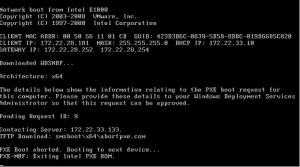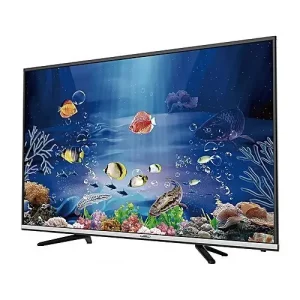How to Troubleshoot Common Computer Hardware Issues


How to Troubleshoot Common Computer Hardware Issues


Introduction
Computer hardware issues can be frustrating and disrupt your workflow significantly. From random shutdowns to unresponsive peripherals, these problems can hamper your productivity and cause unnecessary stress. However, with some troubleshooting techniques and basic knowledge, you can often resolve these issues on your own, saving time and money on unnecessary repairs. In this article, we will guide you through the process of troubleshooting common computer hardware problems, step-by-step, and provide essential tips to tackle them effectively.
1. Identifying the Problem
When you encounter a hardware issue, the first step is to identify the problem accurately. This involves observing the symptoms and understanding when the problem occurs. Some common hardware issues include:
1.1 Random Shutdowns
Random shutdowns can occur due to a variety of reasons. It could be caused by overheating, power supply issues, faulty RAM, or even a failing motherboard. Pay attention to any error messages or warning lights that appear before the shutdown.
No Display
If your monitor remains blank or displays “No Signal,” it could be due to loose connections between the computer and the monitor, a faulty graphics card, or a damaged monitor cable. Check the connections, and if possible, test the monitor with another computer to rule out a monitor-related issue.
Unresponsive Peripherals
When your keyboard, mouse, or other peripherals stop working, try reseating the connections. Sometimes, loose USB connections can cause the peripherals to become unresponsive. Additionally, check the batteries in wireless peripherals, as they may need replacement.
Slow Performance
Slow performance may be caused by a lack of RAM, a fragmented hard drive, excessive background processes, or malware. Check your computer’s resource usage in the Task Manager to identify any resource-hogging applications.
2. Basic Troubleshooting Steps
Once you have identified the specific problem, follow these basic troubleshooting steps:
Restart Your Computer
A simple restart can resolve many hardware issues caused by temporary glitches. Restarting your computer clears the RAM and stops any processes that might be causing conflicts.
Check Physical Connections
Ensure all cables and connections are secure and properly plugged in. Pay close attention to power cables, monitor connections, keyboard, mouse, and any other peripherals you may have.
Update Drivers
Outdated drivers can cause compatibility issues and hardware problems. Visit the manufacturer’s website to download and install the latest drivers for your hardware components, such as the graphics card, motherboard, and peripherals.
Run Hardware Diagnostics
Many computers come with built-in diagnostic tools that can help identify and fix hardware problems automatically. These tools can test your RAM, hard drive, and other components for errors.
Scan for Malware
Malware can cause various hardware-related issues and significantly impact your computer’s performance. Run a full system scan using reliable antivirus software to remove any malicious programs.
3. Dealing with Specific Hardware Issues
Overheating CPU
An overheating CPU can lead to random shutdowns and permanent damage to the processor. To resolve this issue:
Check if the CPU fan is working correctly. Clean dust and debris from the CPU heatsink and fan to ensure proper airflow.
Apply a fresh layer of thermal paste between the CPU and heatsink to improve heat transfer.
Consider upgrading your CPU cooler or adding additional case fans for better cooling.
Faulty RAM
Faulty RAM can cause system crashes, blue screen errors, and overall instability. To address this issue:
Reseat the RAM modules in their slots firmly to establish a proper connection.
Test individual RAM modules by removing one at a time and checking for the issue.
If you identify a faulty RAM module, replace it with a compatible one.
Graphics Card Problems
Graphics card issues can result in display problems and poor gaming performance. To troubleshoot graphics card-related problems:
Reseat the graphics card in its slot to ensure a proper connection.
Update the graphics card drivers to the latest version from the manufacturer’s website.
Test the graphics card in another computer if possible to check for hardware failure.
Hard Drive Errors
Hard drive errors can lead to data loss and system crashes. To address hard drive-related issues:
Run disk cleanup and defragmentation to optimize drive performance.
Use the built-in Windows tool or third-party software to check for disk errors and bad sectors.
Consider upgrading to a solid-state drive (SSD) for improved performance and reliability.
Power Supply Problems
A faulty power supply can cause random shutdowns and hardware failures. To troubleshoot power supply issues:
Check if the power supply unit (PSU) is providing enough power for all your components.
Test the PSU using a PSU tester or replace it with a known working one to see if the issue persists.
Make sure all power connectors are properly connected to your motherboard and components.
4. Seeking Professional Help
If you have followed all the troubleshooting steps and still cannot resolve the hardware issue, it may be time to seek professional help. Certified technicians have the expertise and tools to diagnose and repair complex hardware problems. Don’t hesitate to reach out to a reputable computer repair service for assistance.
Conclusion
Troubleshooting common computer hardware issues can be a daunting task, but armed with the right knowledge and techniques, you can often resolve them on your own. Remember to identify the problem accurately, follow basic troubleshooting steps, and seek professional help if needed. By taking care of your computer’s hardware, you can ensure a smoother and more enjoyable computing experience.
Tips Summary
1. Restart your computer first; it may resolve many issues.
2. Check and secure all physical connections, including power cables and peripherals.
3. Update your drivers regularly to ensure compatibility and performance.
4. Use built-in hardware diagnostics tools to identify problems automatically.
5. Scan your computer for malware regularly to avoid hardware-related issues.
6. Keep your CPU cool by cleaning the heatsink and applying thermal paste if needed.
7. Test and reseat RAM modules to address memory-related issues.
8. Update graphics card drivers and reseat the card to fix display problems.
9. Check for hard drive errors and consider upgrading to an SSD for better performance.
10. Investigate power supply problems if you experience random shutdowns or hardware failures.








